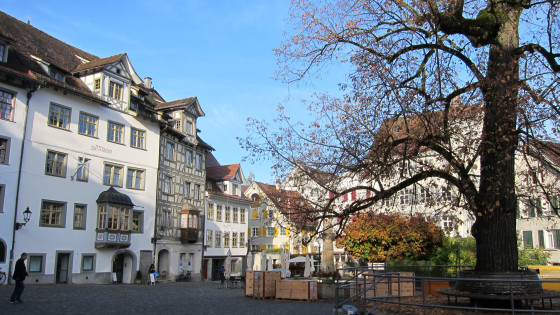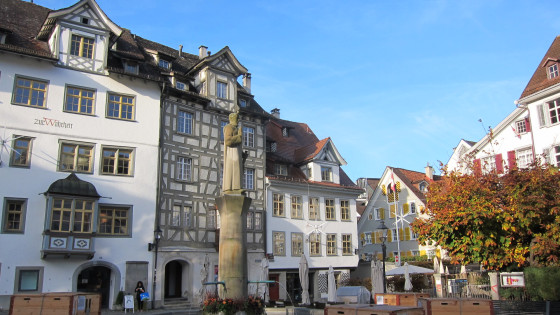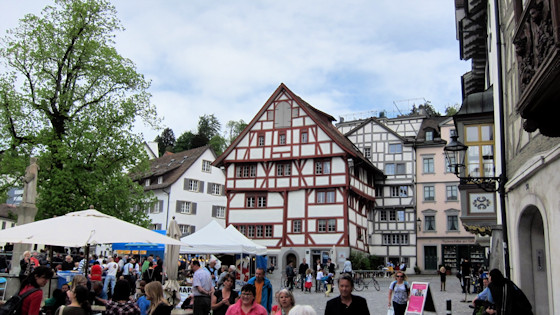St. Gallen lies between the two hills of Rosenberg in the north and Freudenberg in the south and is about 10 km (as the crow flies) from Lake Constance.
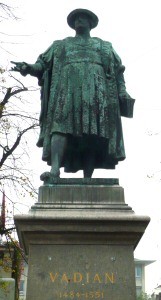
Here we are standing in front of the Vadian monument. He was the scion of an important St. Gallen merchant family (15th century) and was actually called Joachim von Watt. He was a promoter of humanism and a friend of Huldrych Zwingli, the pioneer of the Reformation in Switzerland. Both studied at the University of Vienna.
In early 1526, Vadian was elected mayor of the city of St. Gall and in the following years carried out the Reformation, especially in the monastery of St. Gall. Vadian enjoyed great renown in Switzerland as a reformer for the rest of his life.
The UBS is housed in this Art Nouveau building with the Hermes
On the square in front of it is the "Broderbrunnen" (fountain). In 1895, Lake Constance water flowed into the St. Gallen households. In memory of this, August Bösch created the Broderbrunnen near the Multertor.
Picture of the figure at the Broderbrunnen;
Click on the image to enlarge!

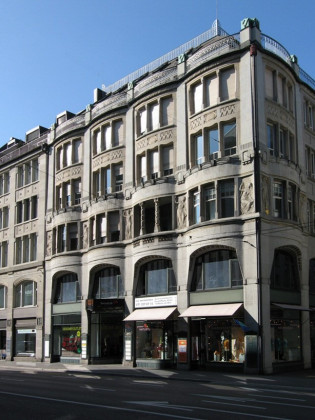
At the Art Nouveau house Oceanic we find five goddesses of fate.

Here we are at Grüningerplatz (Grüninger square). Paul Grüninger was St. Gallen police commander and saved several hundred refugees from the Nazis in 1938/39. He was therefore removed from office. He was rehabilitated in 1993.
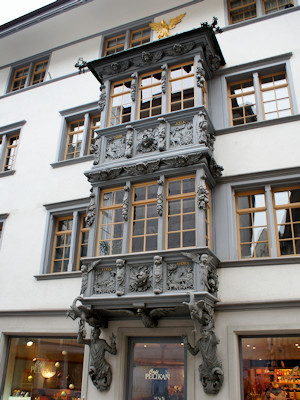
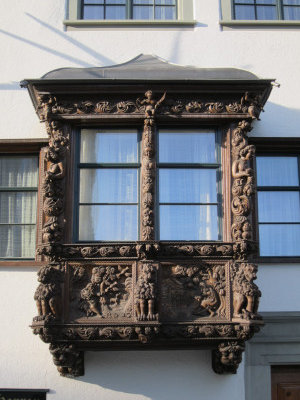
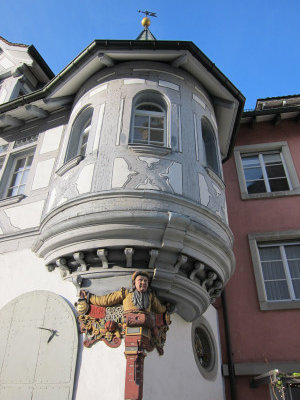
Another special feature of St. Gallen are the many oriels on the houses of the wealthy merchants.

The Protestant-Reformed city church of St. Laurenzen is located in the immediate vicinity of the abbey district and still points to the former rivalry between the Protestant city and the Catholic Gallus monastery.
Founded in the 9th century and endowed with parish rights before 1170, it was rebuilt from 1413 under the direction of Michel of Safoy (Salem).
In the first quarter of the 19th century, the church received its present appearance.

The "Great Wall" was built in 1566. It separated the Reformed city from the Catholic monastery district and the surrounding countryside, which belonged to the Abbey of St. Gallen. Only a small part of it is still preserved.
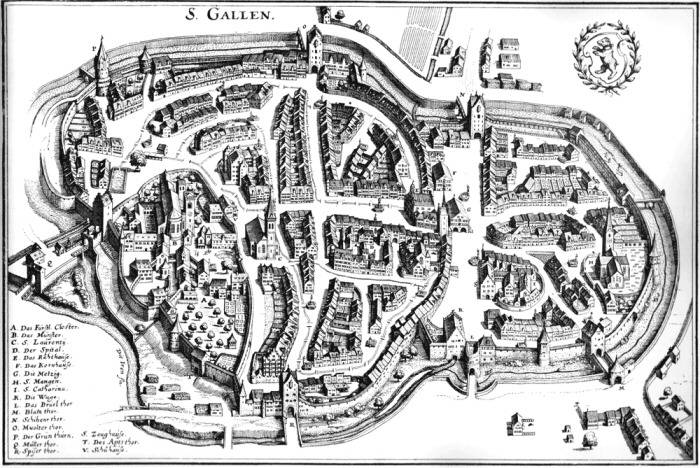
On the map from 1642 you can see the wall.
The only preserved town gate is the Karltor. It was built in 1569 and 1570 and leads directly into the monastery district.
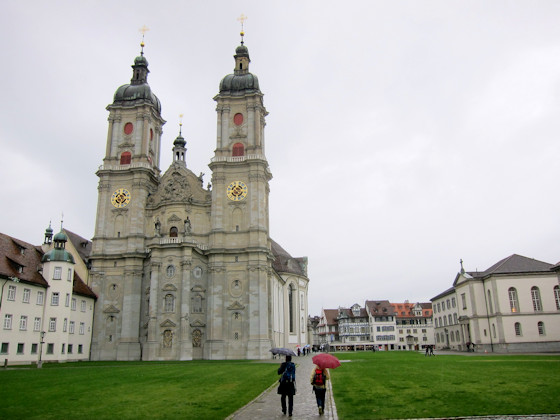
Here we are standing in front of the cathedral of St. Gall. According to legend, the monk Gallus built a hermitage here in 612 and a monastery in 719. Today's buildings are a work of the late Baroque, were built between 1755 and 1767 and are a UNESCO World Heritage Site. They are the last baroque buildings in the Lake Constance region.
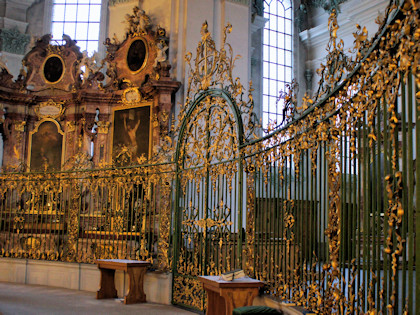

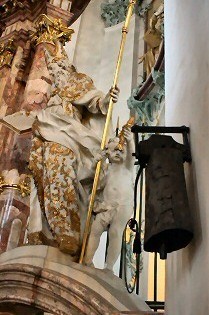
Baroque choir grille, view into the chancel and the bell that St. Gallus brought with him from Ireland
Pictures from Gallusplatz (Gallus square). Here, directly in front of the monastery walls, craftsmen and burghers settled as early as the 10th century. They were the first St. Gallen residents not to belong to the clerical community.
In the middle of the square, a fountain designed by Rudolf Seitter in 1936 commemorates St. Gallus. However, this area has only been called Gallusplatz since 1865; before that it was called much more prosaically "Loch" (hole) or "im Loch oben" (in the hole above).


